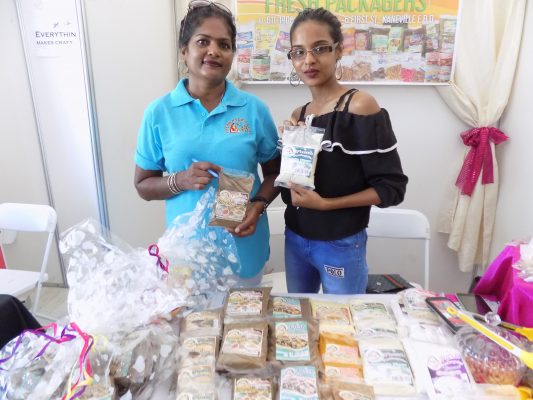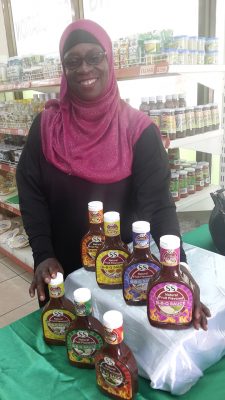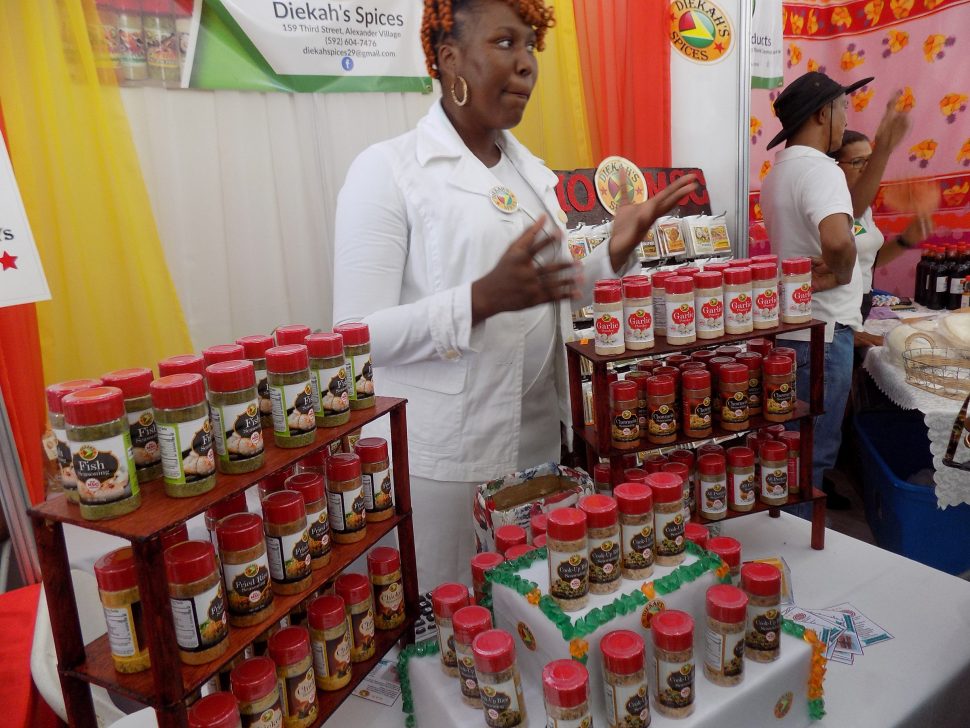The argument that it might have taken more years than we had hoped does not gainsay the fact that a considerable amount of light has begun to find its way into the room as far as the development of Guyana’s agro-processing industry is concerned. No less remarkable than the fact that agro processing is beginning to turn the proverbial corner is the realization that the transformation has been spearheaded largely by women who have had to invest mostly their own resources and their own time, energy and resilience in an initiative which, up until now, is still to bring them the commensurate material returns.
We would have to go back perhaps three decades to be able to make a meaningful comparison between the jam jars, sub-standard paper labels and primitive processing techniques that had characterized the packaging and labeling to which our agro-produce had been subjected to the contemporary era where the pressure of local as much as global demands have compelled the sector to raise its game, and we have done so with a fair measure of distinction. The graduation in the production process from the manual mincing mills and graters to low-technology machinery has been one of the more significant steps forward. It has not, however, been the only one.

It is hard to leave aside, even for a moment, the role played in this transition by women, many of whom who had been driven to take up agro processing by force of material circumstances, in the first place, and who not only began with a technology deficit as far as what it takes to offer a high standard of agro processing is concerned, but also, with a relatively unsupportive lending sector and a state administration that lacked the resources to provide the sector with most of the support that it needed.

The journey from where we were to where we are today was a good deal more painstaking than it seems in retrospect. National consumer acceptance of agro-processed products had to fend off the entrenched reality of imported goods that had long embedded themselves in the local market; so that local agro-processed products like fruit preserves, jams and jellies and food spices had to gird their proverbial loins not only against the internationally renowned brand names, but against their multi-million dollar marketing, their alluring packaging and labeling to say nothing of the well-entrenched preferences of the local market.
We may, at some point, have had a state-directed ‘buy local’ campaign driven by notions of nationalism but that failed decidedly to stem the tide of external market penetration which, in the eyes of local consumers, hopelessly reduced our local products to a distant ‘second best.’ These days, the menace of protectionism even by regional markets, on the one hand, and on the other, what, these days is the seemingly unrelenting importation of goods from the same sources that target ours for exclusion from their markets is hard to take.
It’s difficult to locate the point at which definitive change came in the rise of the local agro processing sector. Part of it may have resulted from the gradual intensification of a domestic entrepreneurial spirit among a new ‘class’ of ‘manufacturers’ whom, as has already been mentioned, were driven to agro processing by force of circumstances. Most of these had begun their ventures with experiments inside small, cramped and ill-equipped kitchens and the first tasters had been schoolchildren in their numbers, patronizing the vendors encamped outside schoolhouses, a circumstance not always to the liking of the food safety watchdogs.
At this time, the local lending institutions were still ‘holding the line’ against what they would have seen as a proliferation on unconvincing investments, the thinking being that these would almost certainly not possess the stamina to stay the course.
To some extent the banks’ prognoses were entirely in order. Many of the pioneering efforts in agro processing simply crashed and burned for want of a sufficiently sound business planning input.
And if the soundings from government were intended to encourage, those noises lacked substantive backing. The resources necessary to raise agro processing off the floor were still not forthcoming. Other stumbling blocks persisted; like weaknesses in the supply chain that created debilitating inconsistencies in terms of access to fruit, vegetables and other raw materials necessary for production and the equally frustrating circumstance of limited local as well as overseas markets, the latter being a function of what, by the turn of the century were more exacting food safety standards that confined much of our agro produce to mostly vending-driven modest markets.
At some point in time government would have no choice but to get on board, meaningfully. The advent of the role of the Guyana Marketing Corporation as a sort of a ‘Minder’ for the new entrants into the agro processing sector , particularly in terms of logistical support in marketing was one of the first major moves in that direction. The GMC, it should be noted, through its Guyana Shop and its wider marketing efforts and other forms of support, has also played a more hands-on role in energizing the sector.
Then there was GUYEXPO, up to that time the biggest ever marketing initiative undertaken in Guyana and designed to attract both local and external (mostly regional) market attention to the country’s agro-processing sector. Alongside this sat the Guyana Office for Investment (GO-INVEST) whose major support role had to do with the external promotion of locally produced goods, including agro produce. Most recently, the advent of the Small Business Bureau (SBB) under the aegis of the Ministry of Business sought to help tackle the problems of funding, business training for agro processors. Among them, the Guyana Marketing Corporation, GO-INVEST and the Small Business Bureau have helped to raise the profile of local agro processing particularly through providing support for local participation in regional and
international product-promotion events.
No less important has been the role of the private sector, particularly the Guyana Manufacturing & Services in staging a series of product promotion events (UNCAPPED) in collaboration with government designed mostly to raise domestic awareness of the country’s agro processing sector and to help grow local markets. With hindsight, it has to be said that the past two to three years has witnessed what has been unprecedented levels of cooperation between the public and private sectors in the area of product promotion, the signal event in a series of initiatives being the September 2018 GUYTIE event, staged by the Ministry of Business in collaboration with the Caribbean Export Development Agency (Caribbean Export) and local business support organizations and promoted as a Business-to-Business (B2B) event designed to create a platform for local export-ready businesses to engage foreign buyers and other potential partners.
Challenges persist – .like cost-related constraints to high-quality packaging and labeling, relatively low levels of access to local supermarket shelves, the persistence of a low-technology manufacturing regime, a continued lack of sufficient confidence in the agro-processing sector by the financing institutions and intra-regional protectionist policies that restrict regional market access for local agro-produce. Still, there is much evidence of forward movement in the sector manifested in significant improvement in product quality and a growing domestic appreciation of the importance of supporting locally produced goods. Perhaps above everything else there is the unquestioned strides which the local agro-processors themselves have made in terms of raising their game in all departments, not least in generating a marked external interest in what the sector has to offer.






